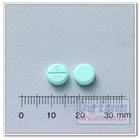![]() Print this Article
Print this Article ![]() Share with friends
Share with friends ![]() Bookmark to Favorites!
Bookmark to Favorites!
The Gout - What Treatment is Right for You?
"We can tell you the truth: cure the gout is possible, but it's often accompanied by other diseases (uric acid for example).
The immobilization of the joint and the application of an ice bag can help relieve the pain, but this is obviously only temporary, pending doctor's visit to take medication.
Medication allows to remove gout symptoms and gout pain in 3 to 10 days."
Article by: Gout
![]()
![]()
![]()
![]()
![]() Rate this article (4864 votes)
Rate this article (4864 votes)
Is it possible to cure gout without treatment?
Yes, to short term. Gout disease can cure itself, but without treatment in depth with medications and diet, you may have gout more increasingly painful and harmful to your joints. In addition, gout can also become a chronic disease.
What are the main treatments for gout?
There are three kinds of treatment for gout:
- Short term: reduce the pain of the gout,
- Medium-term: reduce the level of uric acid in the blood and reduce urate crystals stocks accumulated (hypouricemian needed),
- Long term: avoid new gout disease with a specific diet.
Gout treatment to reduce pain fast
Most of the time, reduce pain is the primary treatment. Immediately apply ice locally (generally the toe of the foot), protecting the skin with a cloth (10 to 30 minutes, 4 times a day). It relieves pain and shortens the duration of the gout in addition to the medical drugs.
Gout treatment with medical drugs (reduce the level of uric acid in the blood and the pain)
For the treatment of gout, doctors use to prescribe these medical drugs:
- colchicine: reduces pain in less than 12 hours and eliminates the gout pain in 2 or 3 days.
- anti-inflammatory steroidal: indomethacin, naproxen, diclofenac, ketoprofen.
- analgesics simple: as the paracetamol.
In case of very painful gout disease, doctor completes the treatment with:
- a cortisone injection: to quickly relieve inflammation
- steroidal: to put an end to excessive pain
- corticosteroids: injected into the joint or taken orally to reduce inflammation
Other treatments to reduce pain of the gout disease
Other treatments, nonvalidated medically, can relieve you during a painful gout: - bicarbonate of sodium: 1/2 teaspoon in a glass of water every 2-4 hours,
- cherries: thanks to its antioxidant properties and its high content of anthocyanin, a natural anti-inflammatory,
- apple cider vinegar: 2 teaspoons of vinegar and 2 teaspoons of honey in a glass of water seem to help during a painful gout by changing the pH of the blood.
New medical drugs for the treatment of gout
Research continues on the most effective treatments for gout. Swiss doctors have recently updated the molecule responsible for inflammation.
Daily tips for the treatment of gout
Food |
|
Beverage |
|
Weight loss  |
|
Sport  |
|
Browse by Categories
About the Gout
Gout symptoms
Discover the main symptoms of gout on the body: fever, joint swelling, pain, and more.

Gout toe photos
Discover surprising photos of the gout toe of the foot and other deformations: ear, hand, feet...

Gout treatment
Discover a selection of the best treatments for gout: paracetamol, colchicine, etc...
Glossary about Gout
Uric acid
Substance that is the cause of gout (if rate greater than 0,08 g/l), which is derived from the degradation of purines...
[+] Learn more about uric acid

Purines
Substance located in food (beer, anchovies, etc) which in excess cause gout. They help our DNA...

Tophus or Uric acid crystals
Clusters of uric acid crystals that cause deformation on the joints and the under the skin... 

Full glossary about Gout [+] more
Allopurinol: A medical drug that is used to lower the levels of uric acid in the blood.
Drugs for gout: a medical drug that decreases the inflammation caused by gout.
Gouty arthropathy: Destruction of the joints due to tophus (cluster of uric acid crystals).
Kidney stones: « stones » mainly created in the urinary tract.
Colchicine: medical drug that relieves gout pain (also used in prevention) learn more about colchicine
Renal colic: very intense lower back pain due to "stones" that close up the urinary tract.
Hyperuricemia: uric acid rate in the blood above the normal rate (> 420 µmol/l or 70 mg/l).
Hypouricemia: medical treatment to reduce the level of uric acid in the body.
Infiltration: injection of a product directly into a joint.
Renal failure: progressive, important and definitive degeneration of the kidney function.
Psoriasis: chronic disease that affects first the skin.
 Popular:
Popular: 

